Jan Bartek – AncientPages.com – Underwater archaeologists exploring the waters on the Western coast of Silicy have discovered dozens of ancient artifacts dating back to the Battle of the Egadi Islands.
The find was made in the sea of Levanzo, a small island situated off Trapani and of the three main Aegadian Islands. Among the submerged ancient objects recovered with the help of the research vessel “Hercules” are 15 Roman helmets, 20 cheekpieces, two rostrums (a warship’s ram), a sword, and 100 bronze and silver coins.
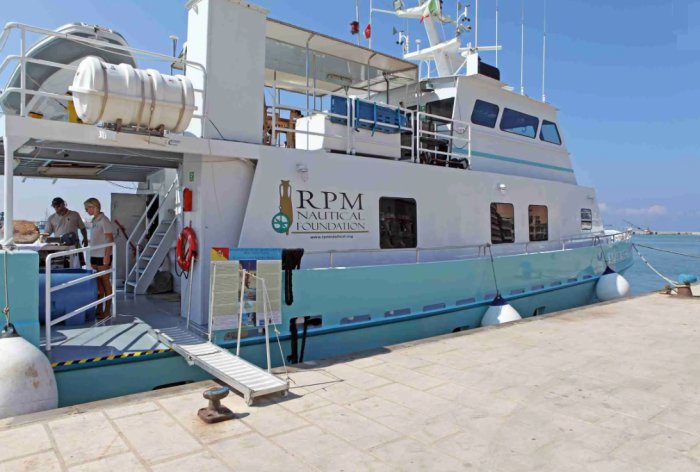
The underwater artifacts were recovered with the ᴀssistance of the Hercules research vessel. Credit: Soprintendenza del Mare della Regione Siciliana
Could these ancient artifacts have belonged to the naval fleets engaged in the Roman-Carthage battle?
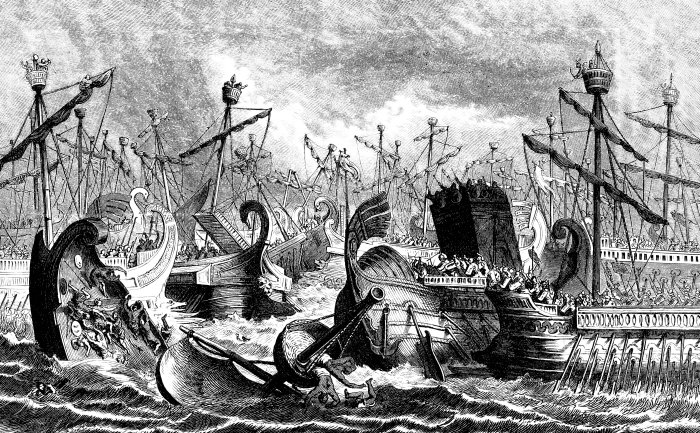
Battle of the Egadi Islands between Romans and the Carthaginian fleet. Credit: Adobe Stock – Erica Guilane-Nachez
The Battle of the Egadi Islands was a decisive moment in history because the battle produced a victory for Rome that established the Romans as a major Mediterranean power.
On March 10, 241 B.C., the Romans defeated the Carthaginian fleet near the Aegates Islands off western Sicily. The event known as the Battle of the Egadi Islands was the final battle of the First Punic War.
Carthage had ruled much of the Mediterranean through mercenary armies for about 600 years. Founded in the 9th century BC by the Phoenicians, Carthage had grown into a large influential empire. In 264 B.C. Carthage and Rome went to war, starting the First Punic War. The immediate cause of the war was the issue of control of the independent Sicilian city-state of Messana (modern Messina). This was the beginning of a long conflict that resulted in three Punic Wars between Romans and Carthage that lasted almost 100 years.
Previous investigations of the underwater sites where the battles led to the finding of many ancient treasures.
As reported earlier on Ancient Pages, some years ago, RPM Nautical Foundation, under the guidance of the late Sebastiano Tusa and the Sicilian Superintendency of the Sea reported discovering a number of bronze rams, heavy metal warheads from the bows of ancient oared warships, scores of bronze helmets, Carthaginian coins, and close to 900 clay containers, called amphoras, that held supplies intended for a Carthaginian garrison on Western Sicily.
The recent underwater discovery has not disappointed archaeologists, and the submerged artifacts help scientists reconstruct a major chapter in ancient history.
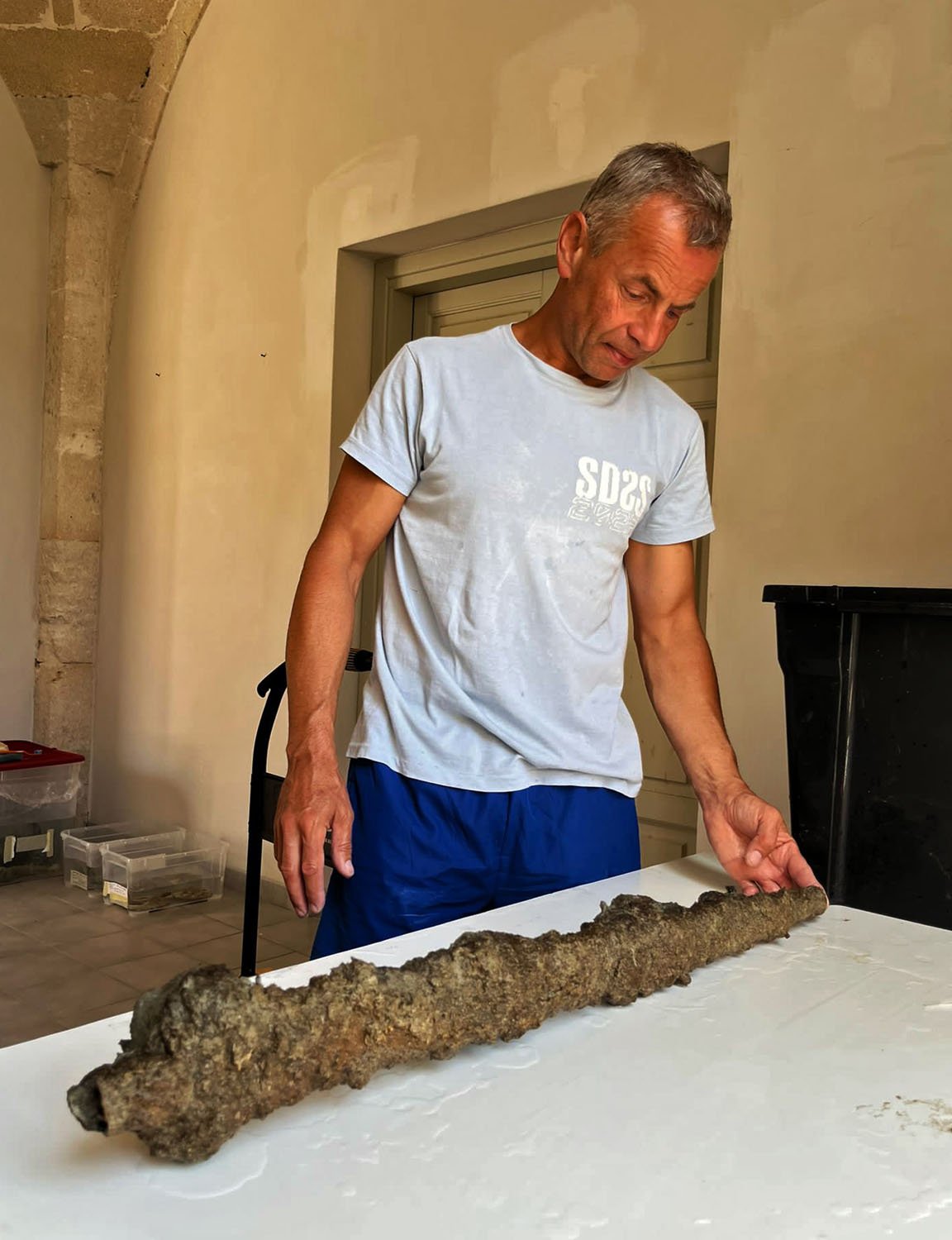
The sword was brought to the surface by the science team. Credit: Soprintendenza del Mare della Regione Siciliana – SDSS
The 15 Roman helmets are of Montefortino type, meaning they are generally characterized by a conical or round shape with a raised central knob, a protruding neck guard, and cheek plates to protect the sides of the head. Celtic prototypes probably inspired Montefortino-type helmets. The Romans quickly adopted the Montefortino-type helmets. Montefortino-type helmets were especially popular in Etruria from the fourth to the second centuries B.C.
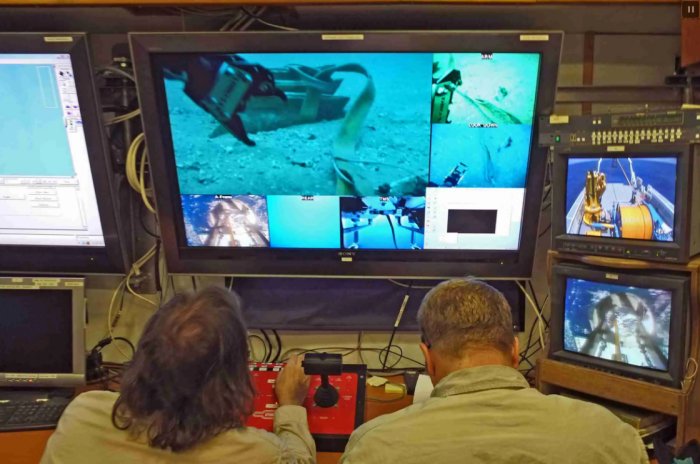
Scientists observing the progress. Credit: Soprintendenza del Mare della Regione Siciliana – SDSS
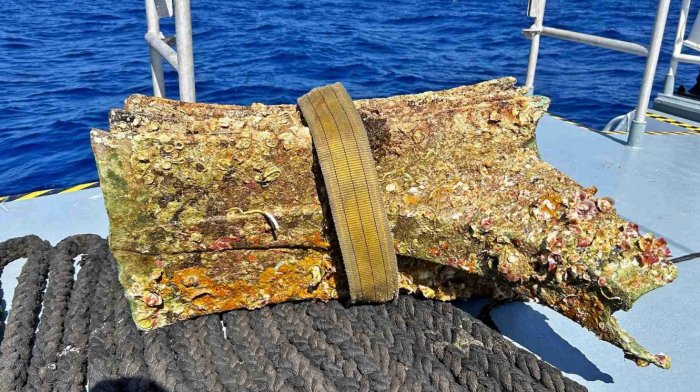
Yet one more of several underwater objects rescued. Credit: Soprintendenza del Mare della Regione Siciliana – SDSS
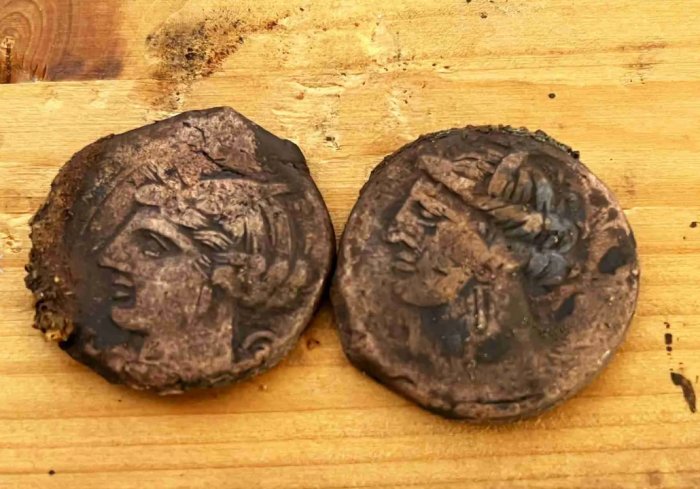
Several submerged ancient coins were rescued. Credit: Soprintendenza del Mare della Regione Siciliana – SDSS
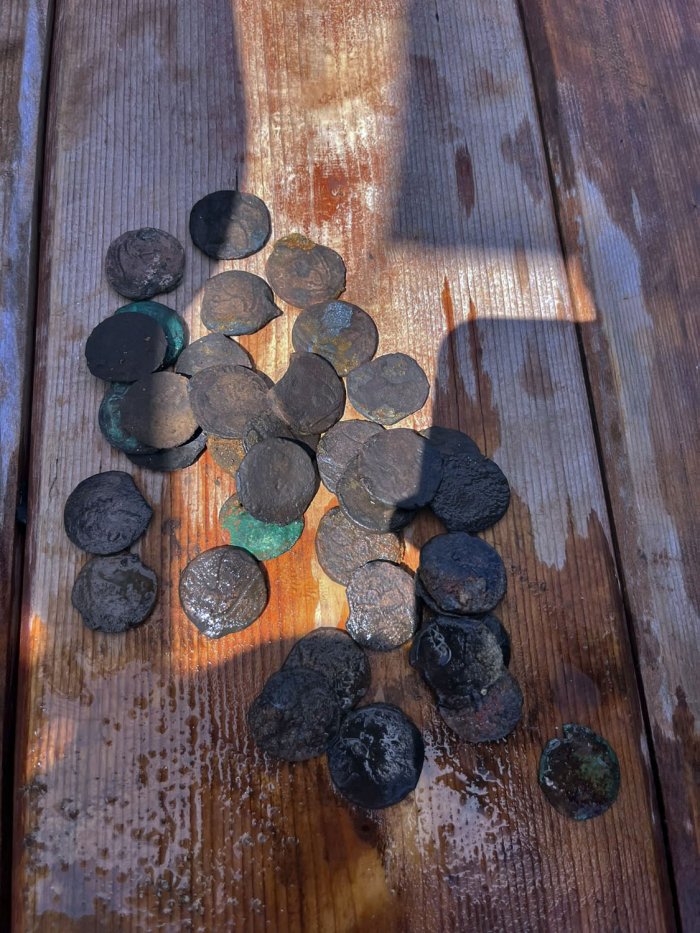
A large number of coins were found. Credit: Soprintendenza del Mare della Regione Siciliana – SDSS
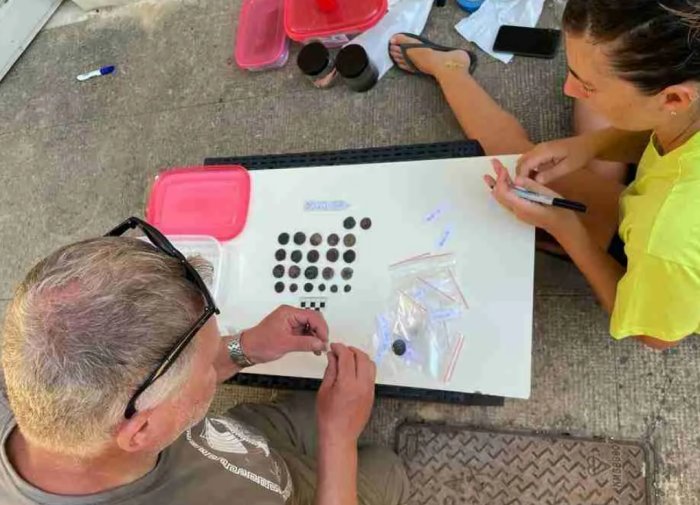
Documentation of the ancient coins. Several submerged ancient coins were rescued. Credit: Soprintendenza del Mare della Regione Siciliana – SDSS
All the finds have been transferred to the first intervention laboratory set up at the former Florio factory in Favignana and are already being examined by the archaeologists of the Superintendency of the Sea.
See also: More Archaeology News
“The seabed of the Egadi Islands once again confirms itself as a precious treasure chest of information for understanding the naval clash between the Romans and the Carthaginians,” the regional councilor for cultural heritage, Francesco Paolo Scarpinato, said in a press statement.
Written by Jan Bartek – AncientPages.com Staff Writer





